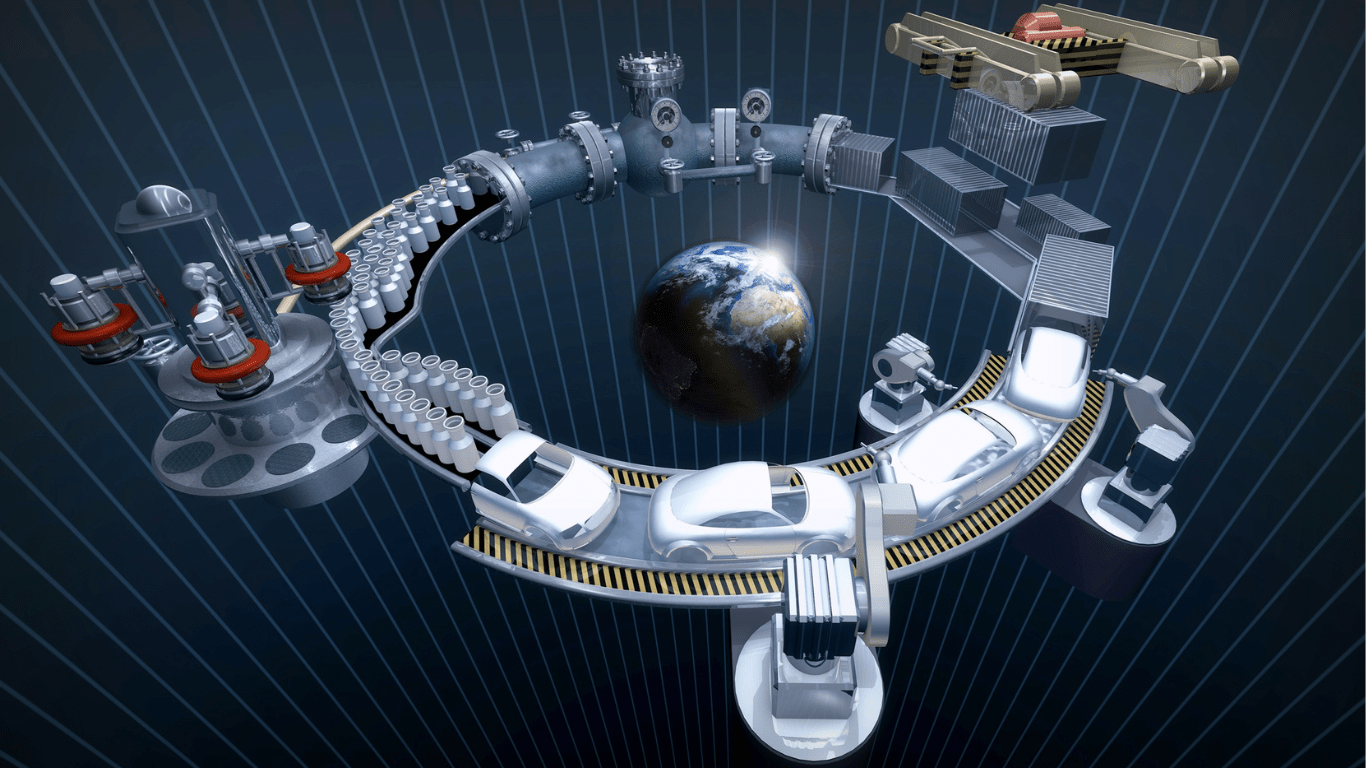Understanding Mergers and Acquisitions
The Role of M&A in Business Growth
Mergers and acquisitions play a crucial role in driving business growth and expansion.
They allow companies to:
- combine resources
- expertise
- market presence to create synergies that can lead to increased competitiveness and profitability.
Strategic M&A activities enable organizations to enter new markets, access new technologies, and diversify their product or service offerings.
Through mergers and acquisitions, companies can achieve economies of scale, streamline operations, and enhance their overall strategic positioning in the industry.
Different Types of Mergers and Acquisitions
There are various types of mergers and acquisitions that companies can undertake based on their strategic objectives and financial goals.
Some common forms include horizontal mergers, vertical mergers, conglomerate mergers, and acquisitions of assets or equity.
- Horizontal mergers
Involve companies operating in the same industry or offering similar products/services. - Vertical mergers
On the other hand, involve firms within the same supply chain, where a supplier merges with a manufacturer or distributor.
Conglomerate mergers occur between companies in unrelated industries.
Acquisitions can also take the form of asset purchases, where a company buys specific assets of another firm, or equity acquisitions, where a company purchases a stake in another company.
Each type of merger or acquisition serves a specific purpose and can result in different outcomes for the organizations involved.
Historical Overview of M&A
Pivotal Deals in the Past Decades
Exploring the historical landscape of mergers and acquisitions unveils pivotal deals that have sculpted industries over the past decades.
These transformative transactions have reshaped markets, redefined competition, and set new standards for strategic business growth.
During the 1980s, the leveraged buyout of RJR Nabisco by Kohlberg Kravis Roberts & Co. stood out as an iconic deal, showcasing the power of private equity in driving significant corporate transformations.
This monumental transaction not only captured headlines but also set the stage for a new era of deal-making.
In the 1990s, the merger of Exxon and Mobil created ExxonMobil, a merger that not only reshaped the oil and gas industry but also set a benchmark for large-scale mergers in the energy sector.
This strategic integration of two industry giants paved the way for future consolidation within the sector.
Moving into the 21st century, the acquisition of WhatsApp by Facebook in 2014 exemplifies the importance of technology-driven deals in the digital age.
This deal not only expanded Facebook’s user base and market reach but also signaled a shift towards acquiring innovative tech startups to drive growth and enhance competitiveness.
These pivotal deals illustrate the evolutionary nature of mergers and acquisitions, showcasing how strategic transactions have shaped industries, redefined market landscapes, and propelled companies towards growth and innovation.
Key Mergers and Acquisitions in Technology
1. Impact on Market Dynamics
In the realm of technology, mergers and acquisitions play a vital role in shaping the competitive landscape and driving innovation.
Tech giants like Google’s acquisition of YouTube and Facebook’s purchase of Instagram have not only expanded their user base but also led to the introduction of new features and services.
These strategic moves have redefined the way users interact with digital platforms and have set new standards for technological advancements.
2. Reactions from Competition and Consumers
The tech industry is known for its fast-paced nature, and mergers and acquisitions often spark reactions from both competitors and consumers.
When Amazon acquired Whole Foods, it sent shockwaves through the retail sector, prompting competitors to rethink their strategies.
Similarly, the purchase of Skype by Microsoft was met with mixed reactions from consumers, with some embracing the integration of services while others expressed concerns about data privacy.
These reactions highlight the significance of transparency and communication during such transformative deals in the tech space.
Industrial Giants: M&A Changing Manufacturing Landscapes

Consolidation and Expansion Strategies
In industrial sectors, mergers and acquisitions (M&A) play a pivotal role in shaping the manufacturing landscape.
Industry leaders often engage in M&A activities as part of their consolidation and expansion strategies.
These strategic moves allow companies to:
- combine resources
- enhance operational efficiencies
- access new markets
- foster innovation.
For instance, the merger of Dow Chemical and DuPont created a global powerhouse in the chemical industry, enabling the combined entity to leverage complementary strengths and drive growth through synergies.
Such mergers not only reshape the competitive dynamics within the industry but also set the stage for future advancements and technological innovations.
Future of Manufacturing Post-M&A
The future of manufacturing post-M&A holds promising prospects for companies that successfully navigate through integration challenges and capitalize on synergies.
As industries evolve and technologies advance, companies that undergo mergers are poised to unlock new opportunities for growth, innovation, and market leadership.
The integration of digital technologies, automation, and artificial intelligence (AI) into manufacturing processes is expected to revolutionize the industry landscape post-M&A.
Companies that proactively adapt to these changes and leverage emerging technologies will be better positioned to meet evolving consumer demands, enhance operational efficiencies, and drive sustainable growth in the highly competitive manufacturing sector.
Healthcare and Pharmaceuticals M&A Trends
Driving Factors Behind Healthcare Mergers
In the realm of healthcare and pharmaceuticals, mergers and acquisitions play a vital role in shaping the landscape of the industry.
The driving forces behind these mergers are multifaceted.
- Firstly, companies seek to expand their market share and reach a wider audience by acquiring complementary businesses.
This strategic move allows them to strengthen their position in the market and capitalize on synergies.
Moreover, the healthcare sector is undergoing rapid technological advancements and regulatory changes.
Mergers and acquisitions enable companies to pool resources and expertise to navigate these complexities effectively.
By combining forces, organizations can enhance their research and development capabilities, leading to the creation of innovative treatments and therapies. - Another key factor driving healthcare mergers is cost efficiency.
As healthcare costs continue to rise, companies look to streamline operations and reduce expenses through mergers.
By consolidating functions and eliminating redundancies, organizations can achieve economies of scale and deliver more affordable healthcare services to patients.
How M&A Is Reshaping Patient Care
The evolving landscape of healthcare M&A is revolutionizing patient care in several ways.
- Through strategic mergers, healthcare providers can offer a more comprehensive range of services to patients, leading to improved outcomes and a higher standard of care.
- Integrating different aspects of healthcare delivery, organizations can provide a seamless experience for patients, ensuring continuity of care across various specialties.
Furthermore, M&A activities in the healthcare sector drive innovation and research, ultimately benefiting patients. - By joining forces, companies can combine their expertise to develop groundbreaking treatments and medical technologies that have the potential to transform healthcare delivery.
This collaborative approach fosters a culture of innovation and continuous improvement, ultimately raising the standard of patient care across the industry.
Healthcare and pharmaceuticals M&A trends are driven by a combination of factors aimed at enhancing market competitiveness, fostering innovation, and improving patient care.
As the industry continues to evolve, mergers and acquisitions will remain key drivers of change, shaping the future of healthcare delivery and advancing medical breakthroughs.
Retail and E-Commerce Mergers
1. Online vs. Brick-and-Mortar Transformations
In the realm of retail and e-commerce, mergers have catalyzed a shift in the traditional landscape, blurring the lines between online and brick-and-mortar establishments.
Companies like Amazon’s acquisition of Whole Foods Market exemplify the convergence of online giants with physical stores, revolutionizing the shopping experience for consumers.
This trend underscores the strategic alliances formed to bridge the gap between digital convenience and in-person engagement, redefining how businesses interact with customers across various platforms.
2. How Mergers Affect Consumer Choices
Mergers in the retail and e-commerce sectors exert a palpable influence on consumer choices, shaping preferences through expanded offerings and optimized services.
When e-commerce giants integrate with established retail chains, consumers benefit from a broader selection of products and more streamlined purchasing processes.
This convergence not only enhances the shopping experience but also introduces innovative solutions that cater to evolving consumer demands, ultimately empowering individuals with a diverse array of choices tailored to their needs.
Media and Telecommunications: A Flux of Mergers
Convergence of Media Giants
In the fast-paced world of media and telecommunications, mergers have become a strategic tool for growth and market dominance.
Media giants are increasingly joining forces to consolidate resources, expand their reach, and capitalize on the ever-evolving digital landscape.
Companies like AT&T’s acquisition of Time Warner and Disney’s purchase of 21st Century Fox exemplify this trend.
These mergers not only reshape the competitive landscape but also drive innovation through the convergence of content creation and distribution platforms.
Regulatory Challenges and Approvals
Navigating the regulatory landscape is a critical aspect of mergers in the media and telecommunications sector.
As companies strive to merge and create synergies, they often face stringent regulatory scrutiny to ensure fair competition and consumer protection.
Obtaining regulatory approvals can be a lengthy and complex process, requiring companies to demonstrate compliance with antitrust laws and regulations.
Failure to secure these approvals can jeopardize the merger deal and impact market dynamics.
However, successful navigation of regulatory challenges paves the way for market consolidation and enhanced offerings for consumers.
Financial Implications of M&A Deals
Stock Performance Analysis
Analyzing stock performance post-mergers is crucial in understanding market reactions. Stock prices often fluctuate in response to M&A announcements.
For instance, after Google’s acquisition of YouTube, Google’s stock price surged by 1.8%, following investor confidence in the acquisition’s potential to drive revenue growth.
Conversely, stagnant stock prices post-merger may indicate investor skepticism about the deal’s synergy or long-term profitability.
Predicting Market Trends After Major Mergers
Predicting market trends following major mergers involves evaluating industry dynamics and competitor responses.
Companies like AT&T, after acquiring Time Warner, experienced increased market share and revenue diversification.
By monitoring market reactions, such as rival companies launching counter-strategies or innovative offerings, one can anticipate emerging trends post-merger.
The ability to foresee market shifts enables firms to proactively adjust strategies to capitalize on new opportunities.



